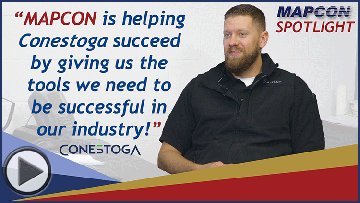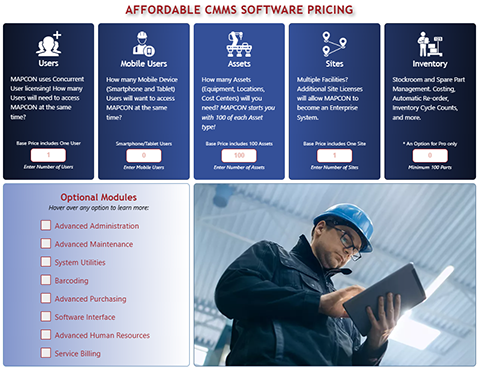Published: August 30, 2022 | Updated: October 06, 2025
Published: August 30, 2022 | Updated: October 06, 2025
CMMS Unveiled: Proof of Success, Comprehensive Features, and Added Value
 This third installment of our four-part series continues to dissect the elements of an effective presentation, focusing on their direct application to a Computerized Maintenance Management System (CMMS). This week, the discussion centers on the power of testimonials, the detailed unveiling of the CMMS itself, and the presentation of valuable bonuses. Understanding these phases assists organizations in fully appreciating the breadth and depth of a CMMS solution.
This third installment of our four-part series continues to dissect the elements of an effective presentation, focusing on their direct application to a Computerized Maintenance Management System (CMMS). This week, the discussion centers on the power of testimonials, the detailed unveiling of the CMMS itself, and the presentation of valuable bonuses. Understanding these phases assists organizations in fully appreciating the breadth and depth of a CMMS solution.
Building Trust with Testimonials: CMMS Success Stories
After establishing credibility and hinting at solutions, the next crucial step involves offering tangible proof of success through testimonials. For a CMMS, these are not just endorsements; they are narratives of transformation from organizations that have experienced significant improvements in their maintenance operations after implementing the system. These accounts serve as powerful validation, demonstrating that the proposed solution works effectively for others facing similar challenges.
In a large food and beverage processing plant, for example, a testimonial from their maintenance manager might detail how the CMMS drastically reduced equipment downtime, leading to a consistent increase in production output. The manager could recount how the system’s preventive maintenance scheduling module helped shift their approach from reactive repairs to proactive asset care, ultimately extending the lifespan of critical machinery. This narrative provides real-world evidence, showcasing the CMMS’s practical impact on efficiency and profitability.
Another example could come from a municipal water treatment facility, where a supervisor shares how the CMMS improved regulatory compliance through meticulous record-keeping and automated reporting, preventing potential fines and ensuring public safety. These testimonials not only affirm the system’s capabilities but also build confidence by providing relatable scenarios of successful implementation.
The Power of Partnership and Collaborative Success
Beyond simple endorsements, testimonials often highlight the collaborative aspect of CMMS implementation. They can showcase instances where organizations have partnered with the CMMS provider, receiving ongoing support and guidance that leads to sustained success. This demonstrates a relationship beyond a mere software transaction.
Consider a national hotel chain adopting a CMMS across its numerous properties. A compelling testimonial might come from their Director of Facilities, who describes how the CMMS vendor provided comprehensive training to their maintenance teams, ensuring smooth adoption and proficiency. The Director might also mention the availability of readily accessible technical support, which resolved initial queries quickly, maintaining operational continuity. This type of testimonial underscores the vendor's commitment to client success and the collaborative efforts involved in achieving positive outcomes. Such accounts illustrate that a CMMS is not just a product but a complete solution supported by a dedicated team, fostering a sense of security and long-term partnership for potential users. They provide tangible proof that the CMMS provider assists clients in every step of their journey.
Discover how streamlined maintenance processes can elevate production. Learn more.
The CMMS Revealed: What It Is and What It Does
Once testimonials have built a strong foundation of trust, the presentation transitions to a detailed revelation of the CMMS itself. This part outlines the comprehensive nature of the system, explaining its core functionalities and how they address various maintenance needs across diverse industries. The focus remains on the "what it is" and "what it does," reserving pricing discussions for a later stage.
A Computerized Maintenance Management System offers a centralized platform for managing all aspects of an organization’s maintenance operations. It provides precise control over preventive maintenance activities, ensuring the longevity of critical assets and equipment. For a logistics and warehousing operation, a CMMS handles tracking of forklifts, conveyor systems, and loading dock equipment, scheduling routine inspections and servicing based on usage or time intervals. The system enhances inventory control by providing real-time item locations and automating quantity records, preventing stockouts of essential spare parts. It also tracks meter and gauge readings to assess equipment health, allowing for predictive maintenance interventions before failures occur.
Furthermore, a CMMS assists in managing human resources by tracking employee skills, scheduling shifts, and inputting timecard information directly into the system. For facilities using barcoding, a quality CMMS connects seamlessly to barcode printers and scanners, facilitating rapid data entry and asset tracking. With proper assistance from the CMMS company, the system integrates with existing Enterprise Resource Planning (ERP) and accounting systems, creating a unified operational environment. This comprehensive overview demonstrates the CMMS's capability to transform maintenance from a reactive function into a proactive, data-driven department, impacting numerous aspects of daily operations.
Tailored Solutions Across Diverse Industries
The versatility of a CMMS stands as a significant aspect of its offering. It adapts to the unique demands of various sectors, making it a valuable tool for organizations of different scales and purposes.
In a pharmaceutical manufacturing plant, a CMMS plays a critical role in maintaining the integrity of highly sensitive production equipment and ensuring compliance with stringent regulatory standards. It manages calibration schedules for precise instruments, tracks the maintenance history of cleanroom equipment, and provides auditable records necessary for regulatory bodies like the FDA.
Conversely, in a large university campus, a CMMS manages a diverse array of assets, from HVAC systems in academic buildings to athletic facility equipment and dormitory plumbing. The system handles thousands of work orders annually, scheduling routine inspections, managing repair requests from faculty and students, and tracking deferred maintenance.
Its ability to scale from smaller operations to extensive facilities, serving industries as varied as oil refineries, ethanol plants, hospitals, and natural resource management, highlights its adaptability. This broad applicability demonstrates that a CMMS provides a scalable and configurable solution for almost any organization seeking to improve its maintenance practices.
The Added Value: Bonuses and Comprehensive Support
After presenting the core functionalities of the CMMS, the discussion often moves to highlighting additional value-added items, often referred to as "bonuses." These are supplementary features or services that enhance the overall appeal and utility of the system, further solidifying its value proposition.
For a fleet management operation, these value-added items could include integrated project management tools for tracking major vehicle overhauls, comprehensive warranty tracking for individual components, and detailed downtime tracking to identify recurring issues. The CMMS might also offer depreciation calculations for vehicles, assisting with financial planning and asset replacement strategies. Multilevel authorization capabilities ensure that only authorized personnel initiate or approve critical maintenance actions, enhancing control and accountability.
Beyond these features, the most substantial value of a CMMS often lies in its comprehensive maintenance management planning assistance, initial and ongoing training for users, and continuous technical support. This support package, accompanying a superior software solution, ensures successful adoption and sustained long-term benefits. This approach emphasizes that the CMMS is not merely a piece of software but a complete system backed by expertise and dedicated assistance.
 Understanding CMMS Pricing: A Customized Approach
Understanding CMMS Pricing: A Customized Approach
The discussion of pricing, while often anticipated, often arrives at the later stages of a CMMS presentation. This is because the cost of a CMMS is not a one-size-fits-all figure; it significantly depends on the specific needs and scale of an organization.
A smaller manufacturing facility with a limited number of assets and users will require fewer modules and features compared to a sprawling petrochemical plant with thousands of assets and a large maintenance team. The pricing structure for a CMMS usually reflects this variability, with costs determined by factors such as the number of users, the specific modules implemented (e.g., inventory, preventive maintenance, purchasing), and whether the deployment is cloud-based or on-premise. This necessitates an in-depth planning phase where an organization identifies its precise requirements from the system. A detailed discussion with a CMMS representative then follows, allowing for a tailored proposal that aligns with the company's budget and operational goals.
Scheduling a demonstration of the system becomes an important step in this process, offering a comprehensive overview of the functionalities and how they apply to the specific environment. This customized approach ensures that organizations invest in a CMMS that precisely fits their operational needs, preventing overspending on unnecessary features and maximizing the return on their investment.
The strategic unveiling of CMMS testimonials, its comprehensive features, and the added value of support and specialized functionalities creates a compelling narrative. This structured presentation builds confidence and clearly articulates how a CMMS provides a transformative solution for maintenance operations across diverse industries. The tailored pricing discussion then ensures that organizations acquire a system that aligns perfectly with their unique requirements and financial considerations.
FAQs
What is a CMMS and how can it improve maintenance operations?
A CMMS centralizes maintenance management, helping organizations schedule preventive maintenance, track assets, and reduce equipment downtime.
How do testimonials demonstrate the effectiveness of a CMMS?
Testimonials showcase real-world success stories, proving that a CMMS can enhance efficiency, compliance, and operational performance.
Can a CMMS be customized for different industries?
Yes, CMMS solutions adapt to various sectors, from manufacturing and pharmaceuticals to universities and healthcare facilities.
What additional benefits does a CMMS from MAPCON provide?
MAPCON’s CMMS offers value-added features like project tracking, warranty management, and comprehensive technical support for long-term success.
How does a CMMS help with compliance and regulatory requirements?
A CMMS maintains detailed maintenance records and automated reports, assisting organizations in meeting industry regulations and avoiding fines.
What factors influence the pricing of a CMMS?
Pricing depends on the number of users, modules needed, deployment type, and the scale of the organization’s maintenance operations.
MAPCON | 800-922-4336
MAPCON CMMS software empowers you to plan and execute PM tasks flawlessly, thanks to its wealth of features and customizable options. Want to see it for yourself? Click the button below to get your FREE 30-day trial of MAPCON!
Try It FREE!